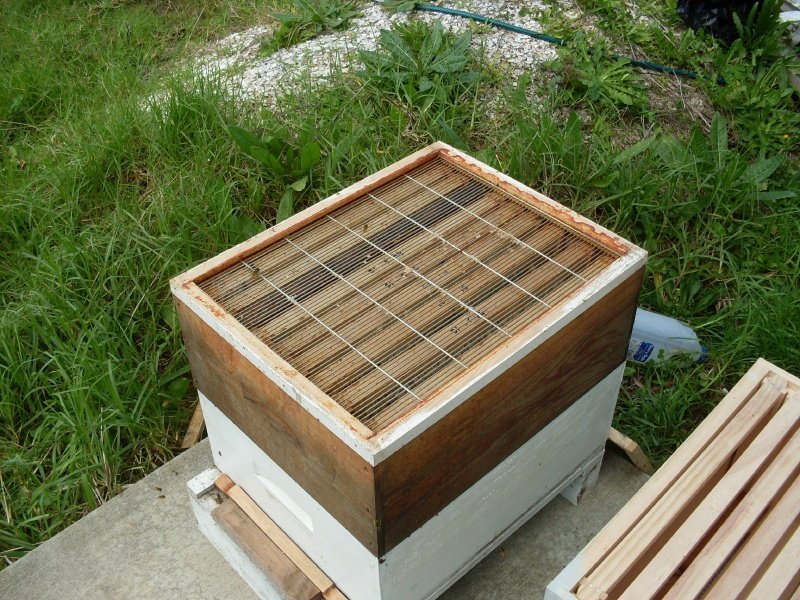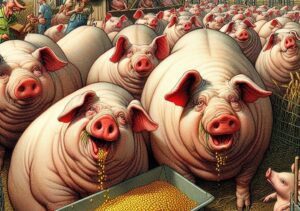
queen excluder.jpg
Queen Excluder
Definition:
A queen excluder is a beekeeping device used to restrict the movement of the queen bee into certain areas of the hive, typically honey supers, while allowing worker bees to pass freely. It consists of a grid or mesh with gaps large enough for worker bees to pass through but too small for the larger queen bee to traverse, thereby confining her to the brood chamber.
Description:
Queen excluders are typically placed between the brood chamber and honey supers in a beehive. The purpose of using a queen excluder is to prevent the queen from laying eggs in the honey supers, which would result in brood in the honey intended for human consumption. By confining the queen to the brood chamber, beekeepers can ensure that honey harvested from the supers remains free of brood and is of higher quality.
Fall off the barn roof and busted your keister? Life on the farm or ranch can be tough on the bum. Need a break? Laugh it off at FarmerCowboy.com, the #1 farm humor site. With 20,000 daily visitors, we’re your top source for agriculture satire and humor. Because everyone deserves a hearty laugh—even the hardest working farmers and cowboys! Join us and turn those long days into fun tales at FarmerCowboy.com.
Characteristics of Queen Excluders:
Queen excluders possess various characteristics, including:
- Mesh Design: Queen excluders feature a grid or mesh design with gaps typically measuring around 4.3 mm (0.17 inches) in width. This spacing allows worker bees to pass through freely but prevents the larger queen bee from crossing into the honey supers.
- Material: Queen excluders are commonly made of metal, plastic, or wood. Metal excluders are durable and long-lasting but may become coated with propolis over time, while plastic excluders are lightweight and easy to clean but may be less durable.
- Placement: Queen excluders are placed between the brood chamber and honey supers, typically above the brood boxes and below the first honey super. This positioning ensures that the queen is confined to the brood area while honey is being stored in the supers.
- Size: Queen excluders are sized to fit the dimensions of standard hive bodies and supers, with dimensions matching those of the hive components to ensure a snug fit and proper alignment within the hive.
Uses of Queen Excluders:
Queen excluders serve various purposes in beekeeping, including:
- Honey Production: Queen excluders facilitate honey production by preventing the queen from laying eggs in the honey supers, ensuring that the honey harvested is free of brood and suitable for human consumption or sale.
- Comb Preservation: Queen excluders help preserve the comb in the honey supers by preventing it from being used for brood rearing. This allows beekeepers to reuse the comb for honey storage in subsequent seasons, reducing the need for bees to build new comb.
- Management Tool: Queen excluders are used as a management tool to control the movement and distribution of bees within the hive, confining the queen to the brood chamber and preventing her from entering areas where her presence is undesirable, such as honey supers or queen rearing boxes.
Conclusion:
Queen excluders are valuable tools in beekeeping for managing honey production and hive organization. By confining the queen to the brood chamber and preventing her from laying eggs in the honey supers, queen excluders help ensure the quality and purity of harvested honey while preserving comb for future use. Beekeepers can use queen excluders effectively as part of their hive management practices to optimize honey production and maintain healthy, productive colonies.
References:
- Morse, R. A., & Hooper, T. (Eds.). (2018). The ABC and XYZ of Bee Culture: An Encyclopedia of Beekeeping. A.I. Root Company.
- Sanford, M. T. (Ed.). (2021). The Beekeeper’s Handbook (5th ed.). Cornell University Press.
Originally posted 2013-05-19 14:08:44.
Originally posted 2024-06-28 19:29:08.
Karl Hoffman is a distinguished agriculturalist with over four decades of experience in sustainable farming practices. He holds a Ph.D. in Agronomy from Cornell University and has made significant contributions as a professor at Iowa State University. Hoffman’s groundbreaking research on integrated pest management and soil health has revolutionized modern agriculture. As a respected farm journalist, his column “Field Notes with Karl Hoffman” and his blog “The Modern Farmer” provide insightful, practical advice to a global audience. Hoffman’s work with the USDA and the United Nations FAO has enhanced food security worldwide. His awards include the USDA’s Distinguished Service Award and the World Food Prize, reflecting his profound impact on agriculture and sustainability.





